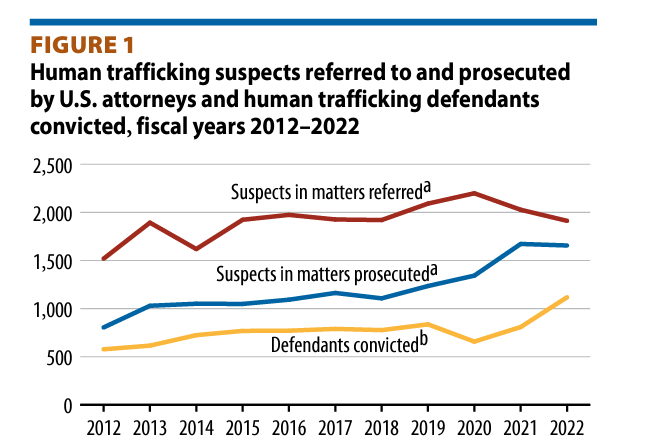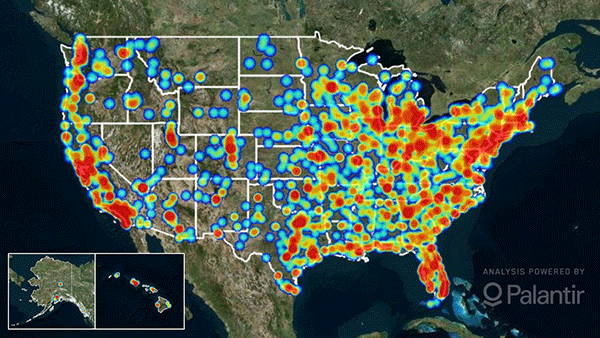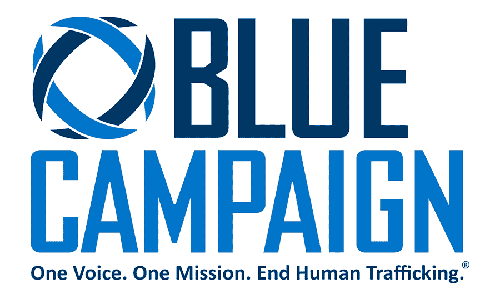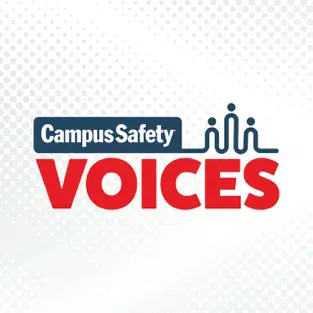Campus Safety is reposting this 2/16/2022 article as January is National Human Trafficking Awareness Month. The article’s data was last updated on 1/23/2025 and reflects the most current statistics provided by The Polaris Project and the National Human Trafficking Hotline.
Please note that due to the U.S. Department of Homeland Security’s protocol, Maraya’s interview was conducted on her personal cell phone. The audio and video quality varies throughout.
In movies and television, human trafficking victims are often portrayed as individuals kidnapped by a stranger, shackled and hidden from the world and living in deplorable conditions. However, the reality is most victims of human trafficking are often living in plain sight, made to participate in sinister activities or work in undesirable conditions due to force, fraud or coercion used by their traffickers.
In 2023, there were 16,999 victims of trafficking identified in the U.S. alone, according to The Polaris Project. Since its inception in 2007, the National Human Trafficking Hotline has received 432,902 signals of human trafficking. The hotline has also identified 100,891 cases of human trafficking with 197,000 victims. Most recent data shows that in 2023, the hotline identified 9,619 cases of human trafficking. Broken down, 68% of the cases involved sex trafficking, 19% involved labor trafficking, and 13% involved both sex and labor trafficking.
Who Are the Perpetrators of Human Trafficking and How Often Are They Convicted?

Source: U.S. Department of Justice’s Office of Justice Statistics
According to the U.S. Department of Justice’s Bureau of Justice Statistics, the number of persons prosecuted for human trafficking more than doubled from 2012 to 2022 from 805 to 1,656 persons. The number of persons convicted of a human trafficking offense increased from 578 persons in 2012 to 1,118 persons in 2022.
Of the 1,070 defendants charged with any of the three types of human trafficking offenses in U.S. district court in fiscal year 2022:
- 91% were male
- 58% were white
- 20% were black
- 18% were Hispanic
- 95% were U.S. citizens
- 71% had no prior convictions.
Human Trafficking on College Campuses
Although exact numbers are unknown since they are vastly underreported, there have been confirmed cases of human trafficking on U.S. college and university campuses.

The National Human Trafficking Hotline, run by non-profit Polaris, receives tips about potential situations of human trafficking and reports that information to appropriate authorities. This heat map shows where they receive the largest volume of call data from around the U.S.
For the past several years, Maraya Lasinsky, chief advisor for the U.S. Department of Homeland Security, has worked on the Blue Campaign, a national public awareness campaign designed to educate the public, law enforcement, and a variety of industry partners on how to recognize the indicators of human trafficking and how to respond. While human trafficking doesn’t affect just one group of people, there are circumstances that make individuals bigger targets.
“Vulnerabilities that could really make somebody more susceptible to trafficking could be a potential language barrier, if that victim lacks stable housing, or even lacks access to food or shelter — very basic needs,” Lasinsky said during an interview with Campus Safety. “If there is a lack of a social support network or strong family networks around them because we know traffickers are looking for hardships. They’re looking for your vulnerability, they’re looking to see what you need, and then they’re going to try to jump in and fill that need for you.”
According to Polaris’ analysis of 2021 data from the National Human Trafficking Hotline, recent migration or relocation was the most frequently reported risk factor or vulnerability identified, applying to just over half (54%) of all likely victims with a known risk factor/vulnerability. Other risk factors include mental or physical health concerns (10%), substance use concerns (9%), unstable housing (8%), or runaway/homeless youth (7%).
While working to identify gaps within the campaign’s targeted audience, Lasinsky, who also has nearly 20 of experience in human trafficking prevention, discovered there was a significant need for training for campus law enforcement. Through her research and speaking to campus law enforcement officers about their specific needs, the “Human Trafficking Response Guide for Campus Law Enforcement and Public Safety Officials” was created.
The guide, designed for both sworn and non-sworn law enforcement, outlines many aspects of human trafficking as it relates to college campuses, including what makes students more vulnerable. In addition to it being the first time living away from home for many, there is also the opportunity to financially exploit students.
“This is a big one we heard a lot from our law enforcement investigators who had worked trafficking cases on campus. You’re usually starting out right with student loans or student loan debt, so right off the bat, that’s an easy way for a trafficker to potentially target a student who’s already experiencing financial hardship,” she said. “Another way that can play out is we heard quite a bit about traffickers who would get the victim to open up a credit card in the victim’s name, and then that trafficker helps them run-up that credit card bill. Then all of a sudden, you have a student who finds themselves in debt. They don’t know how they’re going to pay this off, and then the trafficker can jump in with a solution of, ‘Oh, I have some ideas on how you can pay that bill off.'”
In addition to other factors that make college students more vulnerable to human trafficking (20:42), during our interview, Maraya spoke about:
- What the Blue Campaign does (2:20)
- The different types of human trafficking and what they might look like (5:09)
- Who perpetrators often are in relation to victims (8:51)
- Forms of leverage perpetrators use against victims (12:43)
- How the campus law enforcement guide was created (16:06)
- Who perpetrators often are in relation to student victims, specifically (23:18)
- The prevalence of human trafficking in the United States (24:22)
- Common indicators of human trafficking that campus law enforcement should be on the lookout for (27:00)
- The importance of using a trauma-centered approach when interviewing student victims (29:04)
- Additional resources and training available for campus law enforcement (31:21)
- How students can avoid situations that can lead to human trafficking (34:16)
- Available resources for K-12 campus law enforcement (38:19)
If you are law enforcement and need additional support investigating a possible human trafficking case, call the Homeland Security Investigations Tip Line at 1-866-347-2423.
If you or someone you know may be a victim of human trafficking, visit the National Human Trafficking Hotline’s website, call its toll-free hotline at 1-888-373-7888, or text the hotline at 233733. You can also chat with the hotline via www.humantraffickinghotline.org/chat.









